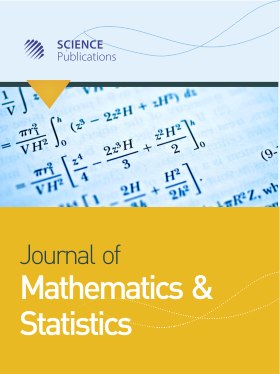Model for Analyzing Counts with Over-,Equi-and Under-Dispersion in Actuarial Statistics
Abstract
Problem statement: Actuarial science has grown much popularity in the recent years due to the growth of insurance companies. In practice, the data involved in actuarial science are mostly counts which may be over-,equi-or under-dispersed. Many probability distributions were proposed to model such data such as the mixed Poisson distributions. However, the estimation methodologies based on such mixed Poisson distributions may be complicated and may not yield consistent and efficient estimates. Approach: In this study, we consider a recently introduced model known as the two-parameter Com-Poisson distribution that is flexible in modeling both over-,equi-and under-dispersed data. Results: The estimation of parameters is carried out using a quasi-likelihood estimation technique based on a joint estimation approach and a marginal approach via Newton-Raphson iterative procedure. Conclusion: The Com-Poisson distribution is applied on two samples of insurance data and we compare the estimates with the estimates based on the Negative-Lindley distribution. Based on the results, it is shown that both Com-Poisson and Negative Lindley yield almost equally efficient estimates of the parameters with fitted values almost close to the actual values under both the joint and marginal quasi-likelihood approaches.
DOI: https://doi.org/10.3844/jmssp.2010.92.95

- 4,168 Views
- 2,847 Downloads
- 2 Citations
Download
Keywords
- Actuarial
- count data
- insurance
- Com-Poisson
- Negative-Lindley
- Quasi-likelihood
- Joint estimation
- Marginal estimation
